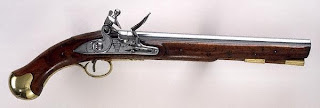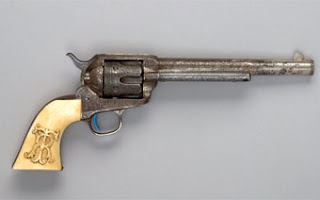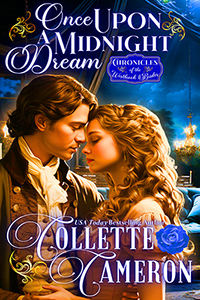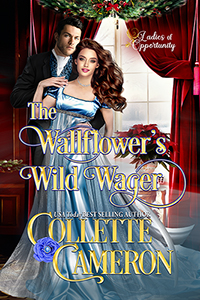I came across this fabulous article about the history of guns yesterday. My heroines have been known to tote a weapon or two around.
Reblogged from the Christian Fiction Historical Society.
The History of the Gun
By Guest Blogger, Mary Connealy
The history of the gun tells the story of America. At its most fundamental, the history of the gun is the history of freedom. And it illustrates why freedom is a thirst within each man and woman’s soul. Being set free unleashes the best in all of us. The story of freedom isn’t reflected by the gun itself, but by the ingenuity behind it, the wealth to be made through it. This is why being allowed to work for our own best interests makes a better world for everyone.
I’m going to hit some of the highlights of the progress made with guns in today’s blog post.
1364: First recorded use of a firearm – shooter lit wicks by hand that ignited gunpowder that was loaded into the gun barrel. Contrary to popular belief, the Chinese did not use gunpowder only for fireworks. In fact, the earliest surviving recipes for gunpowder can be found in the Chinese military treatise of 1044 AD, which contains three: two for use in incendiary bombs to be thrown by siege engines and one intended as fuel for smoke bombs.
14th century China: The matchlock firearms were first mentioned. The matchlock appeared in Europe sometime in the mid-1400s, although the idea of the serpentine appears some 40 years previously in an Austrian manuscript. The first dated illustration of a matchlock mechanism dates to 1475, and by the 1500s they were universally used. The Matchlock secured a lighted wick in a moveable arm which, when the trigger was depressed, was brought down against the flash pan to ignite the powder. This allowed the musketeer to keep both hands on the gun, improving his aim drastically.
1630: Flintlock guns – the flintlock did two things mechanically, it opened the lid of the flash pan and provided an igniting spark. Flintlock is the general term for any firearm based on the flintlock mechanism. Introduced about 1630, the flintlock rapidly replaced earlier firearm-ignition technologies, such as the matchlock and wheellock mechanisms. It continued to be in common use for over two centuries, replaced by percussion cap
1825: Percussion-cap guns invented by Reverend John Forsyth – firing mechanism no longer uses flash pan, a tube lead straight into the gun barrel, the tupe had an exposive cap on it that exploded when struck The percussion cap, introduced around 1830, was the crucial invention that enabled muzzle-loading firearms to fire reliably in any weather.
The percussion cap system was made obsolete by:
1835: Colt revolver – first mass-produced, multi-shot, revolving firearms Samuel Colt invented the first revolver, a gun named after its inventor “Colt”, and after its revolving cylinder “revolver”. In 1836, Samuel Colt was granted a U.S. patent for the Colt revolver, which was equipped with a revolving cylinder containing five or six bullets and an innovative cocking device.
Before the Colt revolver only one and two-barrel flintlock pistols had been invented for hand held use. Colt revolvers were all based on cap-and-ball technology until the Smith and Wesson license on the bored-through cylinder (bought from Rollin White) expired around 1869. “Abe Lincoln may have freed all men, but Sam Colt made them equal.”
1873: Winchester rifle – One of the most successful, and certainly one of the most famous Winchester rifles was the Winchester Model 1873. The Winchester ‘73 was produced in such quantities that they became a common sight in the American West, leading to the rifle being nicknamed:
“The Gun that Won the West.”









